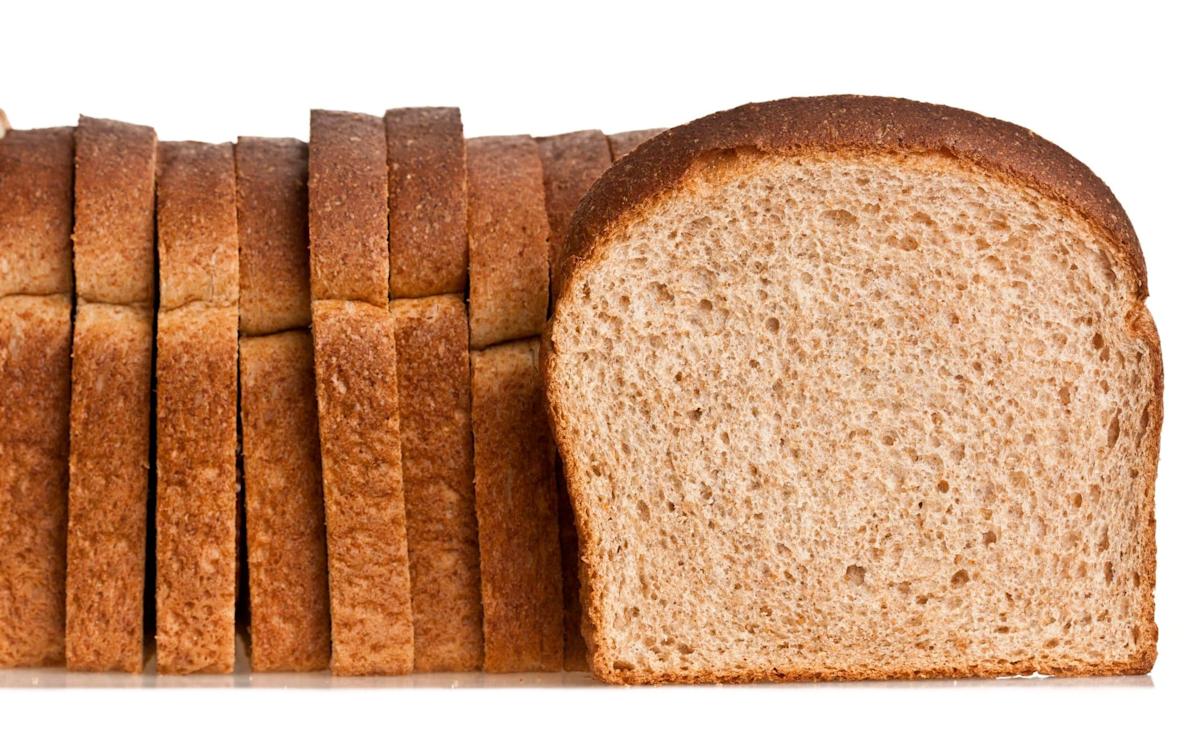Flour, water and salt. These three simple ingredients are all it takes to make a simple loaf of bread. But most of the 60 loaves that the average Briton buys annually are a far cry from this recipe, containing ingredients such as emulsifiers and ascorbic acid. While this cocktail of ultra-processed ingredients gives our supermarket loaves their soft texture and long shelf life, scientists are increasingly concerned about their potential impact on our health. Research has already shown that emulsifiers disrupt our gut microbiome.
And so it makes sense that more of us are drawn to the ‘healthy alternatives’ with a higher price point. Sales of sourdough at Waitrose are up by 28 per cent compared to last year, while purchases of rye bread are up by 25 per cent. Surely a fermented sourdough, an earthy wholemeal or a deep rye bread is better for our health?
But are these premium options actually any better? Not necessarily. A 2022 investigation by the Real Bread Campaign found seven breads using the word wholemeal to market products that were in fact made using up to 50 per cent non-wholemeal flour. More recently, Ocado has confirmed that it will rename its “wholemeal” loaf as “brown” after the group found it was made from a mix of wholemeal and non-wholemeal four.
“The likes of ‘wholegrain’, ‘sourdough’, ‘ancient grains’ and ‘freshly baked’ provide no guarantee of how, where, or when a product was made, or with what,” says Chris Young, the coordinator of the Real Bread Campaign. Many of the familiar terms used to describe the bread we’re buying are not defined or specifically regulated in consumer protection law. “Across industrialised food in general, a good rule is: the bigger the marketing claim on the pack front, the greater the need to read the small print on the back.”
So, how can you tell if your bread is any good?
How to tell if your wholemeal is the real deal
For a bread to be named or advertised as wholemeal, all of the wheat flour used in the bread must be wholemeal, according to the UK’s Bread and Flour Regulations.
However, the law doesn’t prevent manufacturers from adding in soya flour or highly-refined gluten powder to pad out the mixture, reducing the concentration of wholemeal flour in the finished loaf, Young explains. “They can also use all the E numbers they like,” he adds.
Also, while a general rule is the darker and browner the bread, the healthier it is, it’s not always a reliable indicator of a bread’s health status, notes Sammie Gill, a registered dietitian and spokesperson for the the British Dietetic Association.
Some manufacturers add caramelised brown sugar or molasses to enhance the depth of colour, which shoppers may assume means that it is a healthier bread than it actually is, notes Duane Mellor, a registered dietitian and senior lecturer at Aston Medical School.
For a healthier loaf, Gill recommends picking a wholemeal bread that has as few ingredients as possible.
It’s also worth bearing in mind that, while the bread aisle remains difficult to navigate, wholemeal still trumps white bread in terms of your health because they are made with whole grains, says Gill.
“Whole grains contain three main components – the fibre-rich outer layer called the bran, the starch-based middle layer, or the endosperm and the nutrient-packed core of the grain (called the germ),” she notes. By contrast, white bread only contains the endosperm.
“When the whole grain is used, the bread automatically becomes more nutritious,” she explains. “Whole grains are higher in fibre, protein, healthy fats, phytochemicals, vitamins [such as vitamin E and B12] and minerals [such as iron, zinc and magnesium].”
Are you buying sourdough or ‘sourfaux’?
“Rather than a style of bread, sourdough is a process,” explains Young. Genuine sourdough combines a “starter” (made from flour and water) which is topped up over days until it becomes a live lactic acid bacterial culture (indicated by the presence of bubbles). It is this live culture that causes the bread to rise, rather than baker’s yeast.
However, there is no legal definition of sourdough in the UK. “This means that bread manufacturers can use it loosely and label bread as ‘sourdough’ even if it doesn’t use a live starter,” Gill says. “This can be very misleading to consumers.” These bread products have been labelled “sourfaux”.
The reason this is important for health is that genuine sourdough has been shown to help regulate blood sugar levels, explains Gill. The live starter also contains beneficial compounds produced by the bacteria during fermentation, she notes.
Sourdough can also help to slow down how quickly the bread is digested, which may help to feel fuller for longer, notes Mellor.
However, these health benefits won’t be conferred if the fermentation of the bread is sped up by the addition of baker’s yeast or if no live lactic acid bacteria develops, according to Young.
So, how can you tell if you’re buying sourdough or sourfaux? “If the product is named or marketed using the word sourdough, but the ingredients list reveals the use of baker’s yeast, a chemical raising agent [such as monocalcium phosphate, sodium bicarbonate, sodium acid pyrophosphate and tartaric acid] or any additive [often listed as E numbers], it’s sourfaux,” says Chris.
“Authentic sourdough is made with only a few ingredients – wholegrain flour, water, salt and a sourdough starter,” adds Gill. “You’re more likely to pick this up from a small independent bakery rather than your local supermarket.”
Other tell-tale signs that your sourdough isn’t the real deal is if the bread states that it is made “with sourdough” or is “sourdough style”, which indicates that the bread has not been made using the sourdough process, Young says.
“I’m pretty sure that companies see the success that artisan bakeries are having with sourdough bread and decide they want a slice of the action,” he says. “Rather than invest in time, skills and re-equipping, though, they want to find shortcuts in their pursuit of profit.”
Is your rye bread really boosting your health?
Rye is widely considered one of the healthiest types of bread. Traditionally, it’s made with flour milled from whole rye grains and is high in fibre, with a typical 40g slice containing around five to seven grams of fibre (compared to the 30g we should have daily). Other key ingredients are water, salt and yeast.
“Rye bread has been linked to several health benefits including improved blood sugar and cholesterol levels, better appetite control and improvements in constipation,” says Gill.
However, there are no standards in the UK for what should be in rye bread. “So what should be in it and what can be in it are very different,” says Young. “A manufacturer can market pretty much whatever they like as rye bread and, as long as there’s some rye flour in there, it’s unlikely that anyone’s going to stop them.”
When it comes to picking a healthy one, Young recommends selecting a bread that has a rye content above 51 per cent.
Which sliced loaf is best for your health?
Rye
Sourdough
Wholemeal
FAQs
How much bread is OK to eat?
Most diet experts recommend eating at least three portions of wholegrains each day and two slices of wholegrain bread per day can count as one of these portions, says Gill.
“But remember, there are many types of wholegrains foods including porridge, wheat biscuits, crackers, oatcakes, brown rice, brown pasta and popcorn,” she notes. “Different wholegrains contain different types of fibre and plant chemicals which feed different gut microbes. So mix it up.”
What is the healthiest type of bread?
“The best choice of bread is one made with wholegrains and as few ingredients as possible,” says Gill. “Added seeds on top is a bonus.”
Wholemeal, brown sourdough and rye are all examples of nutritious breads, she adds. “I’d suggest mixing it up between these three for variety.”


